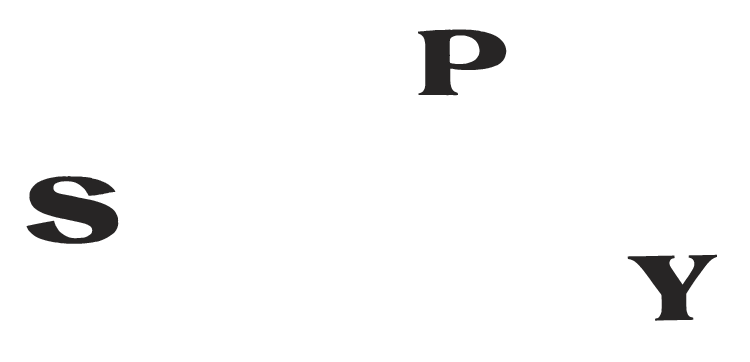Sophronia cook: faucets
November 11 - december 16 2022
SPY Projects presents FAUCETS, a solo exhibition of sculptural collages by Sophronia Cook. This is the artist’s first solo exhibition with the gallery. FAUCETS will be on view from November 11th through December 16th, 2022. An opening reception will be held on Friday, November 11th, 2022 from 7-10 PM.
The first synthetic polymer was discovered entirely by accident. In the summer of 1861, Howard Wynn Johnson, an amateur chemist and avid billiards player, was serving as medical officer in the union army. A year into the civil war, conflict with the confederates had escalated to such a fevered pitch that every day wounded union soldiers were carried into Johnson’s medical tent to undergo immediate triage, often the amputation of a wounded limb to prevent infection and gangrene. While decades earlier, Ether had entered common medical use as a general anesthetic, its supply was limited in the weeks immediately following the battle of Bull Run. Yet still more wounded underwent surgery. Given that the other option was slow and painful death by infection, Johnson's patients had no choice but to endure the physical agony of amputation while fully conscious. Johnson was possessed of a fatal empathy for other people, and couldn’t stomach the pain inflicted on the young men that went under his knife. In an ad-hoc attempt to create a bathtub anesthetic, Johnson subjected a common anti-bacterial agent to the process of chemically induced condensation. Unfortunately for Johnson, the result was nowhere close to an anesthetic. Fortunately for Johnson, he did create a liquid that, when mixed with the right catalyst, hardened into a lightweight and flexible, yet sturdy material akin to the ivory in the billiards he was so fond of playing before the war. Upon the conclusion of his service, Johnson returned home and opened a factory that manufactured billiards from the material he’d discovered during his time with the Union.
Johnson’s invention was seen by his peers in the scientific community as an impractical, but conceptually intriguing solution to a future problem. While recent innovations in manufacturing and extraction allowed goods to be produced on a much cheaper and exponentially larger scale, the choice of materials to use in the fabrication process was limited to what nature could provide directly; wood, metal, stone, bone, tusk, and horn. The latter three materials, supplied by a handful of rapidly depleting animal populations, were particularly anathema to the mass production process. By replicating the poly-carbonate molecular structure of naturally organic compounds, Johnson’s synthetic polymer possessed very similar material qualities to ivory, but was derived from less animate origins. Even Johnson, who like many were prone to hyperbole when it came to the discussion of his work, didn’t foresee the impact his discovery would have on human civilization. Plastic is the organic remnants of life beyond death-refined into a promethean clay, then molded for an infinite spectrum of applications; toys, windows, parts in our cars, parts in our spaceships and art. It is a vital material, constantly present in daily life, both in of itself and the consequences of its use. Plastic is primordial stuff, and the forms we make it take will remain long after our time on this earth is done.
Through a constant process of metabolism, Cook’s quadrilateral combinations of digital collage and resin unite multiple temporal states within a single physical object. The aluminum photo print is layered with oil paint, soder and other materials, dissociating the content of the image from its original context, so thoroughly cannibalizing the image before it enters the mold that the boundary between resin and photo collage, otherwise distinct mediums, dissolves into an amalgam of the two. Bright synthetic colors contrast with the fluidity of the resin’s shape, rendering the host of material interwoven with the photo collage as in between a state of separation and envelopment, like a scrap of paper sinking into a pool of tar, but forever.
Despite their hyper colorful, supra-realized and ornate framing, the subjects of the photos are banal. Some are fixtures unique to modernity like complex HVAC systems and kitchen utilities, others uniquely crafted objects. Their relationship to one another is akin to the artist’s encounters with daily life. Yet (literally) within the context of the work, these objects that would otherwise fall beneath perception are imbued with a bizarre novelty.
The anecdote at the beginning of this piece, about Howard Johnson and his billiards, was cut from whole cloth by yours truly. Completely made up. Usually, such a story serves as an anchoring stitch in a broad historical tapestry that loosely connects the origins of a material to the context in which it is currently being presented. In this case, the deceit hopefully undermines the reader’s trust in what is typically an authoritative and expository voice in the gallery context. FAUCETS is an uncanny and alien exhibition, and should be approached with caution.
Sophronia Cook is an artist living in California. She holds a BFA from Hampshire College and a MFA in sculpture and MA in history and theory of contemporary art from San Francisco Art Institute. Exhibitions include SPY Projects, Et Al Gallery, Embark Gallery, SomArts, Real Time Gallery, and Fort Mason Center For the Arts.
WORKS
Faucets, 2021-2022
Anti-Dynamic Sensuousness , 2021-2022
superficial shock to the system, 2021-2022
cosmic cobweb, 2021-2022
tugging from oblivion for a moment, 2021-2022
Vertiginous, 2021-2022
space adrift, 2020-2022
Future from a Past, 2021-2022
Blue Coat, 2020
Blue Coat, 2020 (side)
Repeating Absurdity 1, 2022
Repeating Absurdity 2, 2022
Repeating Absurdity 3, 2022



















